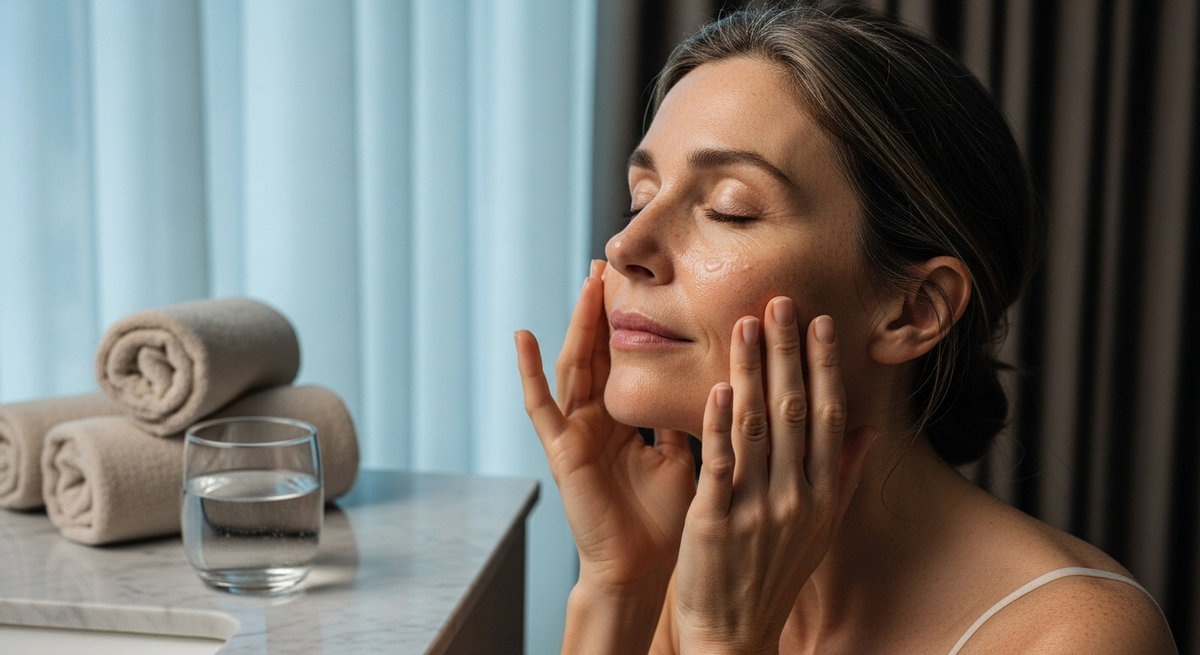
Spring Skin Stress Explained
|
|
Time to read 3 min
|
|
Time to read 3 min
Spring feels like renewal all around —lighter skies, fresh blooms and warmer mornings. But while the season feels fresh, your skin may be telling a different story. Suddenly you’re noticing dryness in one area, congestion in another, or that your usual “go-to” routine doesn’t feel quite right anymore.
Don’t worry—you’re not doing anything wrong. What you’re experiencing is spring skin stress. Here, you’ll learn why it happens, what it does beneath your skin’s surface, and how you can reset and strengthen your barrier so you feel calmer, brighter, and more in control.
Just as hay fever affects your sinuses, spring also agitates your skin through three big triggers:
Even before the heat of summer, UV intensity ramps up in spring. After months bundled in winter, your skin’s natural defence mechanisms (including melanin reserves and antioxidant capacity) are underprepared. Sudden UV exposure creates oxidative stress: free-radical molecules chip away at collagen, weaken elastin, and inflame skin cells. The result? Dullness, sensitivity, or fine-line acceleration.
Pollen isn’t just a sneeze-starter—it’s also a direct irritant to sensitive skin types. Microscopic particles stick to the surface, disrupt harmony in the skin’s acid mantle, and exacerbate flare-ups like redness, itching, or eczema-prone dryness.
Spring is famous for extremes—warm days, cold evenings. This variability confuses your skin barrier. Lipid reserves thin when exposed to wind and dry air, then overcompensate in humidity. The result can be congestion in one area, flakiness in another—a true patchwork of imbalance.
The skin barrier behaves like a bouncer at a club: deciding what to let in (moisture) and what to keep out (irritants). In spring, free radicals, allergens, and moisture loss all put extra strain on this frontline.
Excess UV spikes free radicals. Left unneutralised, these molecules damage proteins and lipids, leading to faster collagen breakdown. That’s why spring without protection can feel like fast-forward on the ageing clock.
Cold winds strip lipids, while warmer bursts increase water loss. This double act weakens your skin’s ceramide balance, making barrier walls less stable, leading to dry patches, redness, and heightened reactivity.
Allergens and environmental swings send your immune system into mini overdrive. Histamine release increases micro-inflammation in skin, often felt as prickliness, itchiness, or noticeable pink flushes.
The good news? Just as the body needs a lighter coat in spring, your skincare routine benefits from seasonal wardrobe adjustments.
Dermalogica's Multivitamin Power Recovery Masque is a professional favourite for stressed, tired or reactive skin. Packed with Vitamins A, C, E, and F, it doesn’t just hydrate. These antioxidants actively target oxidative stress, boosting repair while calming sensitivity. A weekly ritual of this mask is like giving your skin a restorative nap.
Seasonal stress often shows first around the eyes: puffiness, crepey texture, or fine lines suddenly feel spotlighted. Dermalogica's Multivitamin Power Firm Eye Cream blends skin-strengthening vitamins with protective silicone to shield delicate under-eyes against both UV and allergen-triggered wear. Think of it as a spring scarf, but for your eye contour—it prevents damage before it settles in.
While obvious, you’d be surprised how often SPF is underused in spring, only becoming strict in peak summer. SPF should be a non-negotiable daily measure, layered effortlessly over antioxidant-rich serums to double your defence.
Over-cleansing in spring often worsens the imbalance. Sip water often and use gentle, pH-balanced cleansers to prevent further lipid depletion, then seal with ceramide or vitamin-packed moisturisers.
Skin under stress improves with consistency, not quick fixes. After 1–2 weeks of supportive rituals, you’ll notice calmer tone and more hydration. Over 4–6 weeks, expect visibly smoothed lines, brighter eyes, and renewed texture. By summer, your spring reset lays the foundation for healthy resilience against stronger stressors ahead.
Seasons shift, and so does skin. Stress in spring isn’t failure on your part—it’s biology responding to its environment. By understanding the science, adapting your care, and supporting skin with intelligent formulations you allow your complexion to not only withstand seasonal stress but flourish through it.
If you’re uncertain about the right combination for your skin’s spring story, consider booking a free online skin consultation. Together, we’ll create a seasonal strategy that blends science and self-care—for skin that’s calm, confident, and glowing all season long.
Latest from The Skincare Blog